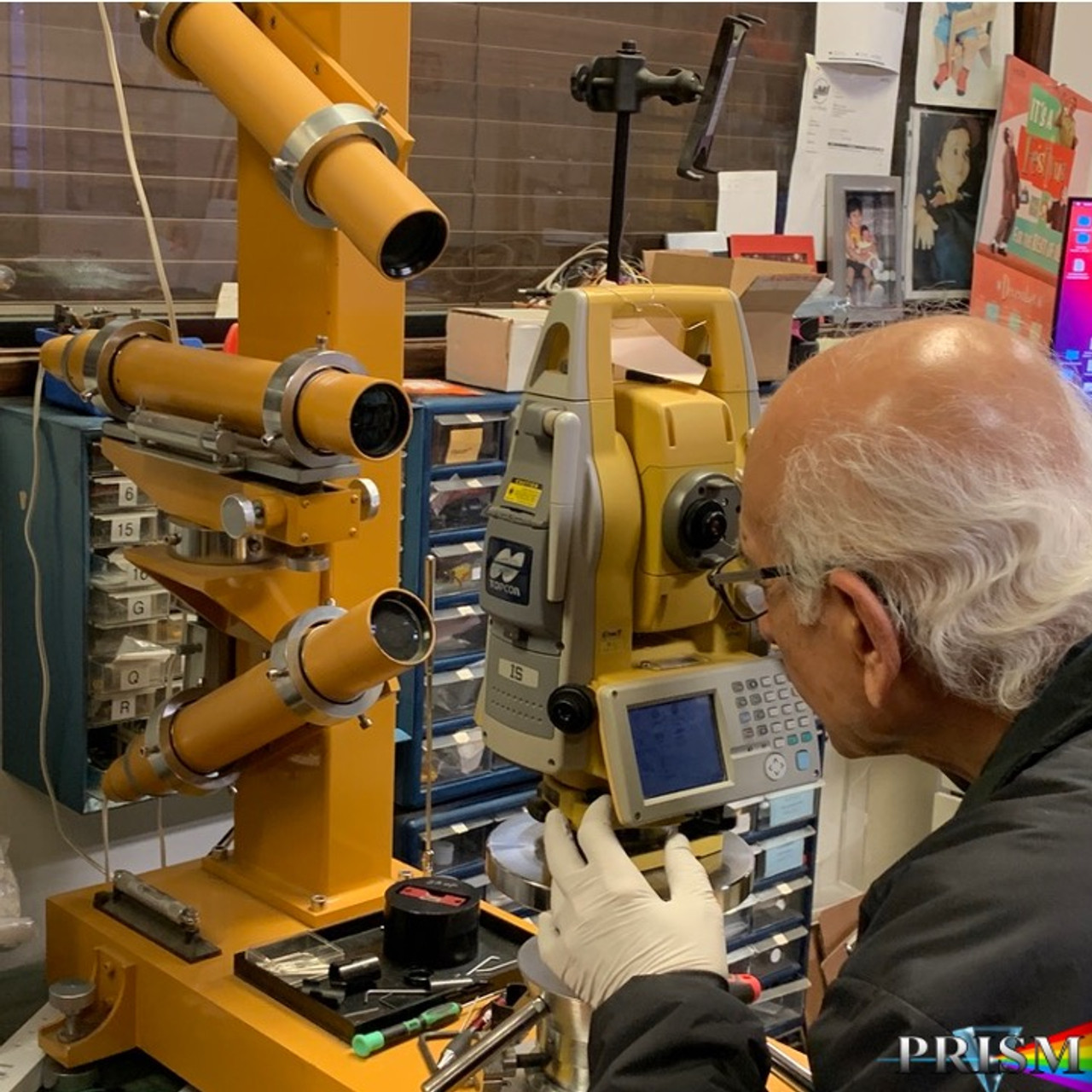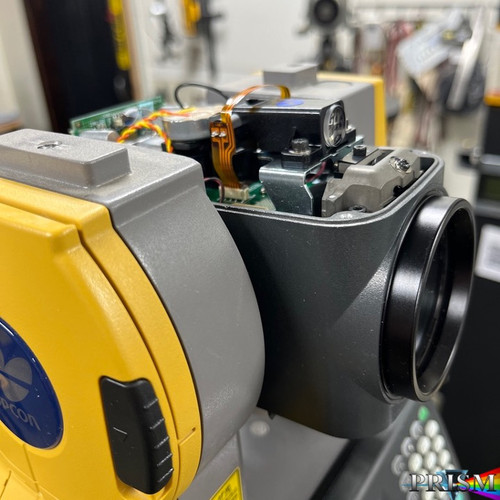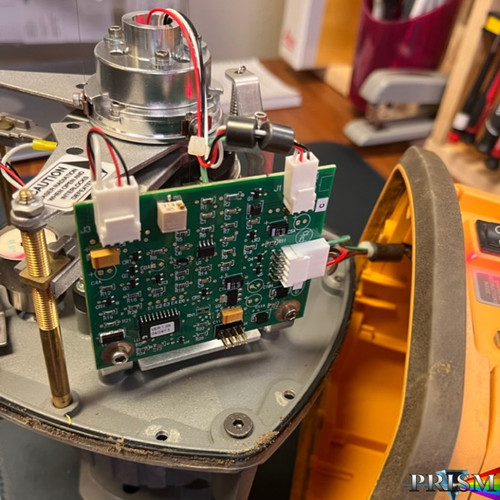Product Description
A total station, an essential surveying instrument, requires calibration of several key components to ensure accuracy and reliability in its measurements. Here are the main elements that are typically calibrated:
Angle Measurement:
- Horizontal Circle Calibration:Ensures the accuracy of horizontal angle measurements.
- Vertical Circle Calibration:Ensures the accuracy of vertical angle measurements.
Instrument Axis testing:
- Hz & V Axis Perpendicularity: evaluates whether the horizontal (Hz) and vertical (V) axes of the instrument are truly perpendicular to each other.
- Horizontal Eccentricity: test whether the horizontal axis of rotation is truly centered and aligned with the instrument’s internal reference system.
- Vertical Eccentricity: checks whether the vertical axis of the instrument is properly aligned with the optical or measurement center.
- Reticle Perpendicularity: checks whether the reticle (crosshairs) inside the total station’s telescope is precisely perpendicular to the instrument’s vertical axis.
- Vertical Plunge Line: checks whether the telescope follows a true vertical path when rotated from zenith to nadir (plunging motion)
Distance Measurement:
- Electronic Distance Measurement (EDM) Calibration:Verifies the accuracy of distance measurements, including the prism constant and measurement range.
Optical Plummet:
- Ensures the instrument is vertically aligned over a specific point, crucial for accurate point measurements.
Leveling:
- Bubble Level Calibration:Ensures the built-in bubble levels (circular and tubular) are accurate.
- Electronic Level Calibration:Ensures the electronic level sensors are precise.
Tribrach Calibration:
- Ensures the tribrach, which attaches the total station to the tripod, is leveled correctly and securely.
Laser Plummet Calibration:
- Ensures the laser plummet is accurately aligned with the vertical axis of the instrument. This is crucial for setting up the total station directly over a ground point with high precision
Compensator:
- Verifies the automatic compensator (if the total station has one) to ensure it correctly adjusts for small deviations from level.
- Updating and calibrating any onboard software to ensure it processes and records data accurately.
Battery and Power Systems:
- Ensuring the battery and power systems are functioning correctly and providing consistent power to the instrument.
Calibration is typically performed using known reference points or calibration equipment and should follow the manufacturer's guidelines to maintain the instrument's accuracy and functionality. Regular calibration and maintenance are crucial for achieving precise survey results.
Multi-Level Calibration Certificates:
-
"Premier" Level Certificate: Confirms that the instrument was calibrated and met the published specifications at the time of final inspection. This certificate includes a product-specific summary of relevant measurement values and "as-left" report, but does not include the measurement standard deviation or supplementary measurement reports. It is recommended for new instruments and well-maintained used instruments that are precise but not necessarily accurate.
-
"Advanced" Level Certificate: Confirms that the instrument was calibrated and met the published specifications at the time of final inspection. This certificate includes the measurement standard deviation, a product-specific summary of relevant measurement values, and a supplementary as-found/as-left measurement summary. Additionally, it covers results from reproducibility testing to ensure consistent performance. It is recommended for all used and serviced instruments. It is recommended for older instruments, and instruments experiencing inconsistent or inaccurate measurements, as well as for instruments that have been serviced or disassembled.
-
"Elite" Level Certificate: Confirms that the instrument was calibrated and met the published specifications at the time of final inspection. It includes the measurement standard deviation, a product-specific summary of relevant measurement values, and a supplementary as-found/as-left measurement summary. Additionally, this certificate provides an extensive analysis of repeatability and reproducibility, incorporating measurement data collected over time. It also includes uncertainty measurements based on relevant ISO principles, ensuring the highest level of accuracy and reliability. It is recommended for older instruments experiencing inconsistent or inaccurate measurements, instruments that have been serviced or disassembled, or those that have been in use for an extended period, to ensure their performance meets rigorous standards over time.













